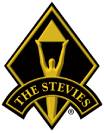There is a tech side to just about every industry, including fashion. It goes beyond purchasing a new favorite sweater on Amazon. Today, you can scroll through Instagram, click on a photo, zoom in to see a product, and buy it with one click.
AI technology is even finding its way into traditional store shopping. You can go to a store and take a picture of a shirt, pants, or a jacket—and using one of several apps, such as Kim Kardashian’s Screenshop app, you can upload the picture and find similar styles and products all over the world. There are even avatar-based apps, such as Dressing Room, that allow individuals to try on clothing virtually. When ready, you can pay for the item with Apple Pay, which is located in your smartphone’s digital wallet.
 Like any industry, the bottom line drives fashion-related businesses, and technological advances are constantly challenging that bottom line. However, the data points collected from searches and purchases are narrowing the gap between product supply and demand, meaning product numbers are more accurate, and fewer materials are wasted. Data are also helping companies predict trends and provide products their customers actually like and want.
Like any industry, the bottom line drives fashion-related businesses, and technological advances are constantly challenging that bottom line. However, the data points collected from searches and purchases are narrowing the gap between product supply and demand, meaning product numbers are more accurate, and fewer materials are wasted. Data are also helping companies predict trends and provide products their customers actually like and want.
As with most business verticals, the fashion industry maintains wholesale production intermediaries. JOOR is one of those companies leading the digital wholesale charge, using analytics within the fashion vertical. Their digital platform connects buyers and sellers online, helping buyers save time and cut costs and leading sellers to better analyze the performance of their inventory.
The company’s model embraces the global shift to mobile-first access and capitalizes on the ease and convenience of streaming handheld devices. Digitizing streamlines the fashion buyer’s process, and as is typically the case when digital technology is implemented, this reduces errors and saves time. The success of JOOR was recognized with a Stevie® Award in Best New Software Product or Service Category.
JOOR was founded in 2010 and is based in New York City, New York, United States. CEO Kristin Savilia is at the helm. She came on board in March 2017 and brought with her 18 years of retail experience and over five years in e-commerce with XO Group (the parent company of popular websites The Bump, The Nest, and The Knot). Even in the hustle and bustle of a technology-driven fashion industry, Savilia—a proactive mother of four—strives for a positive work-life balance.
While she helped lead JOOR to the head of the fashion AI and VR app curve, more technological changes are on the horizon. NextWeb reports the world is ready for the Internet of Things (IoT).
“Apparel items will have digital capabilities that open communication between retailer and customer, such as NADI X, yoga pants with built-in sensors that guide users into alignment by vibrating as they move through the various yoga poses. This example and other IoT apparel items interact with the user to collect data that help retailers understand the needs and concerns of buyers, and then companies can implement solutions to create a more personalized experience.”
In this landscape, individuals will be able to interact with businesses through their yoga pants, informing the companies that made them what they liked best and least. This will allow the companies to make more of those kinds of pants or to offer improved versions, depending on feedback.
That is technology and fashion coming full circle. Try clothes on a virtual reality avatar, search AI apps for any and all styles you like, and then communicate with the product and company directly using the IoT. Companies analyze the data, and the technological personalization and product customization cycle evolves.
In the long run, this seems cost effective and efficient while reducing waste—but it remains to be seen if consumers want to wear yoga pants and other products with AI sensors. Many consumers, however, already talk to Siri (Apple) and Alexa (Amazon), so it might not be too long before this is the product norm.












